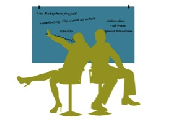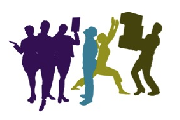In November 2011 we co-hosted a training in Zimbabwe on the Art of Participatory Leadership, together with Marianne Knuth and Bob Stilger. This training was part of a several year programme of capacity building workshops for a group of NGOs, all funded by a German donor agency. We spent 4 days with 30 Zimbabwean NGO leaders, men and women. Most people in the group knew each other from previous trainings.
Bob Stilger shared his reflection on our experience on his blog and later also some more critical reflections. He wrote: “It was a difficult and demanding week. They came expecting to be trained in participatory leadership, and found themselves sitting in a circle. Some of them arrived wanting to know our definitions and expecting us to be carefully articulating frameworks and theories. Instead, we invited them into exploration and questions. Some wanted us to give them answers – we said good questions are more important.”
Reflecting on this with some distance, more than a year after the experience I want to offer a few reflections on what to pay attention to when contracting or preparing for work. In developing a collaboration with a client, I found that it is important to ask these questions:
How does the training/intervention you are asked to do fit into the overall programme/strategy of the organisation or system you’ll be operating in? Are there possible contradictions or controversies about the content or way of working you are offering? Might they be different from the current working and learning culture? If yes how can you best address that?
The Art of Participatory Leadership, part of the family of Art of Hosting trainings, is based on a worldview that sees the world and organisations as living systems. In our trainings we are offering the principles of living systems as an alternative way of looking at reality, which is quite radically different to a more mechanistic worldview that has been part and parcel of conventional management thinking and practice.
Proposing this different worldview often stirs up resistance in participants which is quite a natural reaction given that we invite them to become aware of and question some of their core assumptions. A lot of the methods and tools we offer are inviting human beings into self responsibility and working with self-organisation rather than conventional top-down management practices.
In this training we experienced the resistance stronger than ‘normal’. A potential explanation is that the other modules that were part of this leadership program were teaching a rather opposite approach, focussing on performance or results based management. An approach that has come to dominate development thinking over the past decades.
So what are the lessons here?
- It’s important to create a clear understanding and clarify expectations with the client in the contracting phase. In our case that would have been to learn more about the overall capacity building programme and how our training fitted into or contradicted with some of the other trainings.
- Gather as much knowledge as you can about the participants and their context. In our case there was a gap between the client’s understanding and the participants’, which we were not really aware of to start with.
- If you have not managed to gather all that information, how do you assess and meet the present needs of the people in the room – once you’re there? You might have to let go of what you thought was important. For me this is the art of being fully present in the moment, listening and responding authentically to what emerges. Balancing taking a stand and moving towards who is in front of you, meeting them where they are at. And then there is another art to balance this with the expectations of your client, which might be different from those of your participants. A fine line to walk and an infinite opportunity for learning.
I hope this reflection may contain some useful insights for other practitioners as well as for organisations who want to hire people like us as trainers or facilitators.
You can find more pictures and the design (agenda) of the 4 days here.



